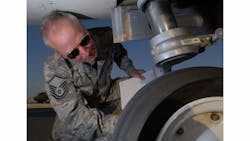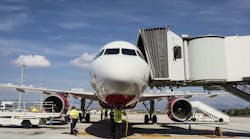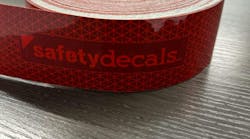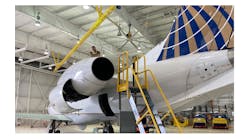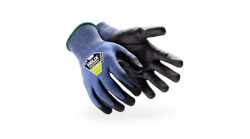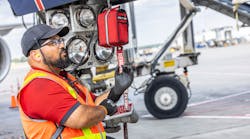I recently retired from the military after 38 years on aircraft ranging from the Minuteman III ICBM and F-4 Phantom to the F-16 Falcon and the C-21A Learjet. I spent about one-fifth of that time in Quality Assurance on ‘16’s and Lears. On top of that, I was the director of maintenance, chief pilot, owner, and director of operations for a small air freight operation flying Cessna 402’s and 206’s. Director of maintenance means I directed the wrench onto the bolt, tightened the bolt, and signed off the work. It was a single-pilot operation.
During my QA time, I was deployed to the Mideast (including the summers!) with the Learjets and, after seeing some of the accidents and incidents that occurred at that high-operations-tempo base, I decided to write a note to our maintenance group so they might understand our purpose as Quality Assurance.
The note became rather lengthy and, it turns out, went well beyond the maintenance group. It went beyond the base. In fact, it was flashed across the Air Force and, in some maintenance units, became mandatory reading by some commanders. I got a lot of positive email traffic from the piece and thought I’d share it with AMT readers because it applies to aircraft maintenance everywhere — on fighters, cargo haulers, airliners, business jets, and light aircraft. I called it, “Understanding the QA Guy.”
Moving back into a former maintainer’s mindset, I recall well my feelings at seeing QA arrive into my work area. Whether on the flight line, in a nuclear missile silo, or at a jet engine test facility, QA gave me about the same feeling I got when a police car pulled up beside me at a stop light. Suddenly, something I feel I’m good at is being judged. My standards and job performance are being scrutinized. As a member of QA here and at my home base, I’d like to help you understand your feelings. And why we’re here.
Safety practices save lives
Long before two-level maintenance, a member of a jet engine test stand crew had been doing his job for several years when he arrived at a forward operating base. The mechanic was well known not only for his troubleshooting abilities, but also for his disregard for basic safety practices. While he could fix an engine very well, he did it without using the books and often disregarded safety equipment— hiding behind an excuse of a high ops tempo.
The event came with an engine on the cell. The run screen had been forgotten at the shop and, citing a need to get done right away, the maintainer insisted the engine be fired up to get on with the job. As senior man on the crew, the other two did as they were told. While leak checking the engine at a high power setting, our man worked his way along the engine as he’d done dozens of times before.
Some think he tripped on one of the test cell stabilizing cables or slipped on the rubber coating of one of the engine connection cables; for whatever reason, while the technician was on the far side of the engine from the operator, he met his Maker. The operator, seeing only the shoes of our expert through the test cell structure, barely saw the shadow head for the intake. Almost instantly the engine started stalling — the operator did an emergency shutdown.
The guy who told me about this, my former supervisor, worked at the engine shop in Thailand during the Vietnam War era. The engine was a J-57 out of an F-101 Voodoo fighter. He said they barely stomached a cursory inspection of the intake and saw the blood, hair, and some clothing pieces ... the engine was quickly put on a trailer, wrapped, and sent to an engine shop in Japan where it was taken apart with oversight by a coroner. Rumor had it the compressor was wiped out and littered with pieces of bone, meat, and, well, you get the idea. The smell was unimaginable and the Japan maintenance members got sick every time another section was opened on the engine.
My 30-plus-year Air Force career is littered with first-hand observations and second-hand accounts of accidents caused by people not following the book. Some are humorous, some not so humorous.
Like an engine shop troop who went up the intake of an F-4 to blend compressor blades and the crew chief who didn’t crawl the intake before he ran the engine. A few seconds after reaching idle the engine gauges started bouncing around; upon shutdown it was discovered the engine shop troop had left a rat-tail file on top of the Constant Speed Drive (CSD) housing. The result was a wiped out compressor and a de-certified crew chief.
Then there was Eric, the ICBM technician I worked with who found the lanyard he was using to be too short to reach everywhere he wanted to be, so he tied himself to a 50-foot piece of nylon rope. While cleaning around the top of the open, 90-foot-deep launcher, a gust of wind nudged him and he performed a free-fall into the hole. Only because Providence was looking down on him did he miss the top of the missile, stopping only inches from a very immovable missile suspension arm at the top of the first stage booster. The guy who rescued him said his eyes were glazed and mouth open for the trip back up the hole. After that, he religiously only used enough lifeline to get the job done and didn’t mind moving the lifeline from attach point to attach point.
Avoid tragedy
Tragedy I’ve known personally from unsafe practices include:
Two brothers, with families, digging in an 8-foot-deep water line without shoring up the sides of the hole; they died together in the same trench when the walls they didn’t shore up collapsed on them. Both suffocated and, according to coroner reports, had a bit of a time to think about it before the lights went out. I attended that funeral.
Last summer, a 23-year-old military member was riding a wheelie on his crotch rocket at an estimated 70 mph in heavy traffic when a car pulled out in front of him. While a helmet may not have done much in the resulting collision with the Cadillac Escalade, it would have at least prevented the mess I came upon immediately after the accident. The two teenage girls were not charged, since they couldn’t see him because of his speed (30 mph zone), the color of his bike, and the fact his headlight was pointed up in the air. They will forever remember the gruesome scene the rider created.
A drunk driver racing down a two-lane highway, passing everyone in sight when he crossed the double-yellow line on a hill crest where he collided head-on with a family in a pickup with a camper on the back. A hundred feet from the burning wreckage, we listened as a father screamed in pain from a hot engine pinned against his abdomen as rescuers tried to cut him free of the wreckage…it might be merciful he died before they could get him out.
So, you want to know why I work in QA? Because of these and many other tales of people who’ve taken short cuts, defied common sense, and disregarded the law. Under this QA hat is another hat I proudly wear the one with the “Dad” logo on it.
As a parent, for the parents
One of the most enduring lessons I’ve gained from my advancing years has to do with parenthood. Many of you fine airmen are parents and know the pleasure and wonder of seeing your child’s birth, first birthday party, first day of school, and so on. Many of you have yet to gain the privilege of being a parent, but one day you’ll probably get this greatest of all opportunities. But, as most of the older NCO’s and Officers in this outfit will attest, it might surprise you to know parents don’t forget those moments. The feelings and concerns that start with a child’s birth don’t diminish as that child goes into the world, including those who join the Air Force. And my fellow parents are one of the most important groups of people I’m working for.
You see, I’ve observed the caskets that occasionally cross the ramp here. I briefly envision the torment some of my fellow parents are feeling as each coffin moves toward its final destination. In most cases, the honorable sacrifices made by those cannot be helped but, there are too many times the flag-draped caskets are due to accidents and carelessness. Like the motorcycle rider. Like the drunk driver. Like the test cell guy.
So, you need to understand I’m looking out for you when I grab you for not wearing personal protective equipment. I’m looking out for your parents when I write you up for not wearing your reflective belt. I’m saving a loved one from days of dazed crying and gut-eating sorrow when I nail you for climbing on flaps or standing on top of a wing without a lanyard. I’m even saving you from sitting in a hospital bed wishing someone would come by to visit when I report you to your commander for a detected safety violation or unsatisfactory condition report.
So, understand when QA arrives in your work area we’ve got an honorable intent. You might say we don’t like seeing sad faces at funerals or hearing of amputated limbs. And we’ll hang you from the rafters if necessary to ensure you or your coworkers don’t end up in a flag-draped box on the cargo ramp.
Clint Lowe holds an FAA Airframe and Powerplant certificate with Inspection Authorization and a Commercial Pilot certificate with instrument and multi engine ratings. Clint has spent most of his aviation career with the United States Air Force and Air National Guard in a variety of roles including maintenance, safety, training, oversight, and accident investigation. He can be reached at [email protected].
